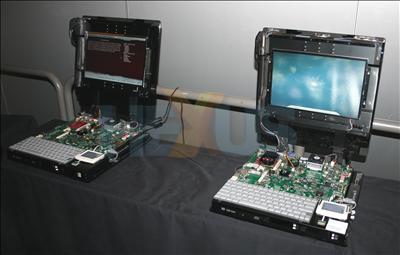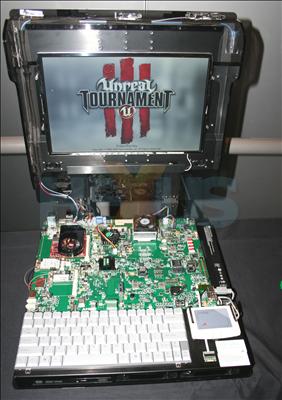Mobile wars: the state of play
The state of play
Laptops now come in a frightening range of flavours. Ranging from ultra-portable, thin-and-light models - weighing just over 1kg - through to desktop-replacement models that are laden with almost as many performance-enhancing features as a high-end desktop, there's a laptop to suit most people, at budgets ranging from £200 up to, well, anything.
Underneath the lid, though, most laptops are the same. There's the CPU, chipset, WiFi, and, if it's gaming-oriented, a discrete graphics card.
Much like the desktop space, Intel has the dominant share of the mobile segment, generally marketed under its Centrino brand that most non-computing-savvy folk are familiar with. Centrino ties the laptop into an Intel-only platform, which encompasses the mobile CPU, chipset, and wireless module. In effect, you sell one part and the rest need to follow, to ensure that the laptop manufacturer receives healthy marketing support from the industry giant. Indeed, Centrino constitutes the guts of most laptops ranging from £300 upwards; just look for the Centrino Duo sticker on your shiny laptop.
Talking specifics, the current Centrino platform, Santa Rosa refresh, ties in an Intel Core 2 Duo mobile CPU (Penryn), Intel Mobile 965 Express chipset - with or without integrated graphics - and the 4965AGN WiFi (draft-n) module.
The mobile CPUs are speedy, the chipset is solid, and the WiFi adequate. Problem is, Santa Rosa refresh doesn't address some of the more pressing mobile needs of 2008, such as hardware-accelerated decode of computationally-expensive high-definition content, or, for that matter, adequate 3D performance from the integrated graphics that still ship in the bulk of modestly-priced machines. That'll change, Intel states, with the introduction of Centrino 2, formerly known as Montevina, in August, however.
AMD's mobile platform, which it defines as an open standard, doesn't receive anywhere near as much exposure as Centrino, frankly. The current incarnation, dubbed Kite Refresh, launched in February last year, comprises of a desktop Athlon 64 X2-derived Turion 64 X2 CPU and mobile 690G chipset.
Laptop manufacturers are (financially) free to choose the WiFi adapter from the broad range of suppliers, though, which intimates direct cost savings - and better performance, AMD claims - when compared to the costlier 4965AGN module from Intel.
Is Kite Refresh bad? No, of course not, but AMD's in the unenviable position of having to do better, substantially better, than Intel before its products gain positive exposure and are taken on-board, in volume, by the heavyweight likes Toshiba, Dell, HP, etc.
That's where, it hopes, Puma fits in.
Here are a couple of engineering Puma systems we saw last month.
Now, let's reveal all.











